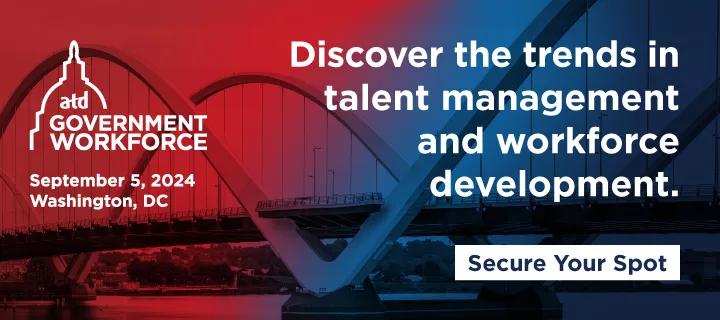ATD Blog
Enhancing Government Training With Secure Virtual Platforms
Tue Aug 13 2024

Training, learning, development, and compliance procedures are vital in every field, especially for government agencies regularly engaged in high-consequence training. There is a growing need for government agencies to standardize training for professional development through a foundational platform—particularly for those agencies that have employees and personnel stationed around the globe who have specific training requirements. The answer? A secure, FedRAMP-certified platform that allows government employees and service members to take training from all over the world that aligns with their schedule.
Understanding High-Consequence Training
High-consequence training prepares individuals for situations where the risk is significant and the consequences of failure are severe, such as those involving bodily injury, loss of life, or severe negative outcomes from improper task performance. High-consequence training also encompasses the protection of sensitive data, where breaches could lead to catastrophic results.
Government agencies frequently handle sensitive data and face high-risk situations, necessitating stringent training and security protocols.
Benefits of Virtual Training for Government Agencies
High-consequence training often occurs in challenging circumstances. Government employees working in infectious disease areas may not have access to in-person expertise. A secure, FedRAMP-certified next-generation virtual training solution like Class enables these workers to receive essential information promptly while demanding the highest levels of security and compliance.
From remote pipeline installations to overseas security training, virtual platforms ensure timely, standardized responses, and effective communication. Failure is not an option in these situations and many others. Virtual training provides a scalable, accessible means of simulation, leading to more standardized and effective responses.
Virtual vs. In-Person Training
With an increasingly distributed global workforce, organizations have been tasked with reimagining many of their previously unquestioned processes. Among these has been reexamining workplace learning, professional development, upskilling, reskilling, and training programs. US government agencies are no exception to this shift. There are currently more than four million US federal government employees. 2022 FEVS data showed that 31 percent of federal employees were working fully in-office, 55 percent were on hybrid schedules, and 14 percent were working fully remotely. While many businesses and organizations need to ensure new innovations to their processes are effective, the federal government must also prioritize security and compliance.
For government and compliance training, virtual platforms enhance effectiveness and efficiency. Unlike in-person training, virtual platforms eliminate geographical and time constraints, allowing global team members to stay updated while adhering to security standards like FedRAMP or HIPAA. Asynchronous training options and advanced metrics provide deeper insights into training effectiveness and individual performance, surpassing the capabilities of traditional in-person training. Even outside of life-threatening situations, agencies can benefit from virtually deployed high-consequence training, as it prepares employees for high-risk situations and ensures organizational success.
Leveraging Secure Virtual Classroom Platforms
Secure training, learning, and compliance procedures are crucial for government agencies and organizations. As technology advances, offering flexible and secure training options is essential.
Government agencies should prioritize providers with FedRAMP- or StateRAMP-approved infrastructures to minimize risk in high-consequence scenarios. Ready to elevate your government or organizational compliance training with a secure virtual platform? Contact a Class team member today to reduce the risks associated with high-consequence training and achieve outstanding results.


